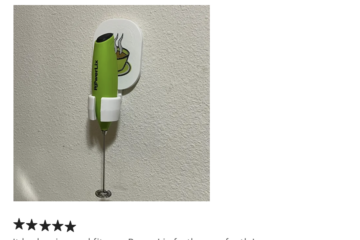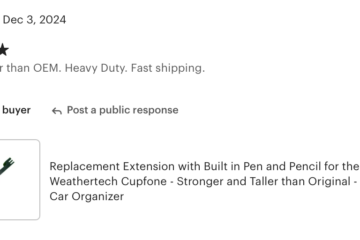Introduction
Wastewater treatment facilities are critical infrastructure requiring reliable, real-time monitoring to ensure operational efficiency, regulatory compliance, and safety. Traditional wired sensor systems have long been the standard, but they come with significant drawbacks—high installation costs, inflexibility, and maintenance challenges. LoRa (Long Range) wireless 4-20mA sensors connectivity present a superior alternative, offering scalability, ease of retrofitting, and enhanced safety.
This article explores why wireless LoRa 4-20mA systems outperform wired solutions in wastewater treatment plants, focusing on:
- The challenges of retrofitting wired systems
- Safety advantages (grounding, galvanic isolation, hazardous environments)
- Cost savings and operational flexibility
The Problem with Wired Sensors in Wastewater Treatment
1. Retrofitting and Reconfiguration Difficulties
Wastewater facilities often require sensor upgrades or reconfigurations due to:
- Expanding treatment capacity
- Regulatory changes
- Aging infrastructure
Wired systems struggle with retrofitting because:
- Conduit and cable routing is expensive and disruptive – Trenching through concrete, underground pipes, and confined spaces increases downtime.
- Signal degradation over long distances – Voltage drops in 4-20mA loops require repeaters, adding complexity. While 4-20mA is very forgiving, it does require watchfulness.
- Limited flexibility – Moving sensors requires rewiring, which is labor-intensive and costly.
Wireless LoRa 4-20mA sensors eliminate these issues by:
- Transmitting data over long distances (5-15 km in open areas) without additional wiring.
- Not well known, but LoRa can penetrate several walls due to its low frequency. This is much more difficult with 2.4Ghz radios, if even possible.
- Supporting battery-powered or loop-powered designs, reducing dependency on existing infrastructure.
- Enabling plug-and-play sensor swaps without trenching or conduit modifications.
2. Safety Concerns: Grounding and Galvanic Isolation
Wastewater environments expose sensors to:
- Corrosive chemicals
- Explosive gases (methane, H₂S)
- Electrical interference from pumps and motors
Wired systems introduce risks:
- Ground loops – Improper grounding causes measurement errors and equipment damage.
- Galvanic corrosion – Dissimilar metals in wet environments degrade connections.
- Spark hazards – Faulty wiring in explosive zones can trigger fires.
LoRa wireless 4-20mA systems improve safety by:
- Eliminating ground loops – No shared ground between sensors and control systems.
- Using intrinsically safe (IS) designs – No spark risk in hazardous areas.
- Optical or magnetic isolation – Prevents galvanic corrosion between dissimilar metals.
Why LoRa Wireless 4-20mA Sensors Are the Best Choice
1. Long-Range, Low-Power Operation
LoRa’s sub-GHz frequencies (868 MHz (Europe), 915 MHz (USA) ) penetrate concrete and metal structures better than Wi-Fi or Bluetooth. Key benefits:
- Battery life of 5+ years – Ideal for remote monitoring.
- Mesh networking capabilities – Self-healing networks ensure reliability.
- No licensing fees – Unlike cellular (NB-IoT, LTE-M).
- No sim cards. Repeat for emphasis: NO SIM CARDS!
2. Seamless Integration with Existing 4-20mA Systems
Many plants already use 4-20mA transmitters. Wireless LoRa adapters allow:
- Direct replacement of wired transmitters without PLC reprogramming.
- Hybrid systems – Some sensors remain wired while others go wireless.
3. Reduced Installation and Maintenance Costs
| Cost Factor | Wired Sensors | LoRa Wireless Sensors |
|---|---|---|
| Installation | High (trenching, conduit) | Low (bolt-on mounting) |
| Expansion | Difficult (new wiring) | Easy (add new nodes) |
| Maintenance | Frequent (corrosion, cable damage) | Minimal (battery swaps) |
Real-World Applications in Wastewater Treatment
1. Remote Lift Station Monitoring
- Problem: Wired sensors in underground pits suffer from moisture damage.
- Solution: Wireless submersible pressure sensors transmit data without conduit.
2. Chemical Dosing Control
- Problem: pH and ORP sensors need frequent recalibration.
- Solution: Wireless 4-20mA transmitters allow easy sensor replacement without rewiring.
3. Biogas Monitoring in Digesters
- Problem: Methane sensors require hazardous-area wiring.
- Solution: ATEX-certified LoRa sensors eliminate spark risks.
Conclusion: The Future is Wireless
Wastewater treatment plants must modernize to meet increasing demands. LoRa wireless 4-20mA sensors provide:
✅ Lower installation costs (no trenching, conduit)
✅ Enhanced safety (no ground loops, galvanic isolation)
✅ Scalability (easy expansion without rewiring)
For facilities struggling with retrofitting challenges, wireless LoRa is the clear winner.
Upgrade your wastewater monitoring today with LoRa wireless 4-20mA sensors. Contact BearMar.com to discuss a slamdunk easy retrofit for your plant.


0 Comments